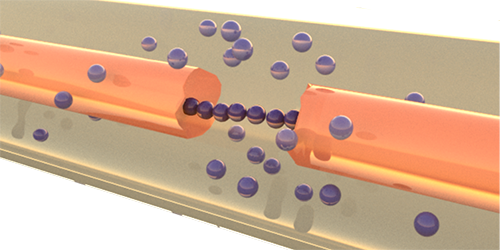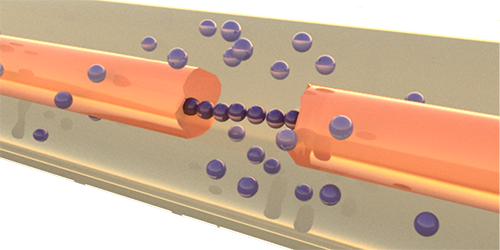Flexible Electronics, Heal Thyself
Modern electronics are increasingly lightweight and durable, but they are structurally rigid. Future electronics using thin semiconductors and flexible substrates would allow for a wide range of applications, including wearable medical diagnostic devices and roll-up displays. However, the interconnects—the thin wires linking the logic gates and other circuit components—are prone to breakage when bent, making flexible electronics unreliable in their present form. In a new experiment, Amit Kumar and colleagues at the Indian Institute of Science, Bangalore, and the University of Cambridge, UK, have demonstrated a new technique for self-healing electronics. Unlike previous self-healing techniques, this method doesn’t require rare materials or the addition of complex circuitry.
The team suspended copper microspheres with 5- radii in silicone oil, an insulating fluid. They then submerged an open electrical connection in this mixture to simulate a broken circuit. The researchers applied a potential difference across the gap, as would be expected for a broken connection in an active circuit. This potential difference created an electric field that attracted the copper spheres. These moved through the silicone oil to form chains of loosely bound clusters of microspheres that bridged the gap. Heat from the current flowing through the chains stabilized them, creating a more stable wire-like connection. In contrast to the re-connections produced by other self-healing experiments, the copper-sphere patch was both flexible and stretchable.
To make the technique viable for applications, the researchers will need to find ways to use smaller copper particles to heal smaller circuit breaks, introduce the silicone-copper suspension into real devices, and eliminate crosstalk between wires caused by the conductive particles in the circuit.
This research is published in Physical Review Applied.
–Matthew R. Francis
Matthew R. Francis is a physicist and freelance science writer based in Cleveland, Ohio.





